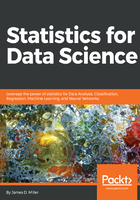
Developing a better approach to understanding data
Whether you are a data developer, systems analyst, programmer/developer, or data scientist, or other business or technology professional, you need to be able to develop a comprehensive relationship with the data you are working with or designing an application or database schema for.
Some might rely on the data specifications provided to you as part of the overall project plan or requirements, and still, some (usually those with more experience) may supplement their understanding by performing some generic queries on the data, either way, this seldom is enough.
In fact, in industry case studies, unclear, misunderstood, or incomplete requirements or specifications consistently rank in the top five as reasons for project failure or added risk.
Profiling data is a process, characteristic of data science, aimed at establishing data intimacy (or a more clear and concise grasp of the data and its inward relationships). Profiling data also establishes context to which there are several general contextual categories, which can be used to augment or increase the value and understanding of data for any purpose or project.
These categories include the following:
- Definitions and explanations: These help gain additional information or attributes about data points within your data
- Comparisons: This help add a comparable value to a data point within your data
- Contrasts: This help add an opposite to a data point to see whether it perhaps determines a different perspective
- Tendencies: These are typical mathematical calculations, summaries, or aggregations
- Dispersion: This includes mathematical calculations (or summaries) such as range, variance, and standard deviation, describing the average of a dataset (or group within the data)